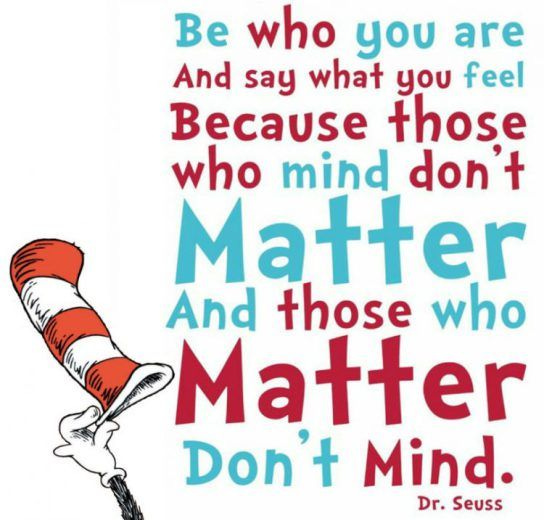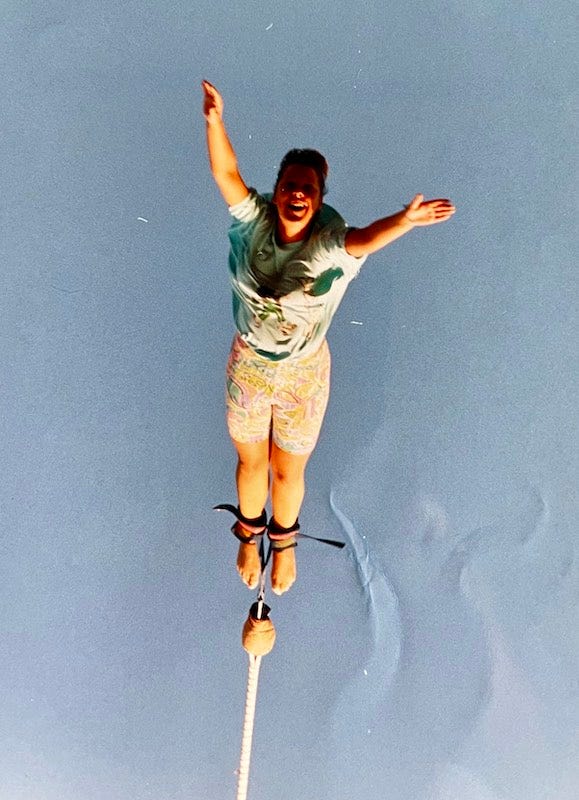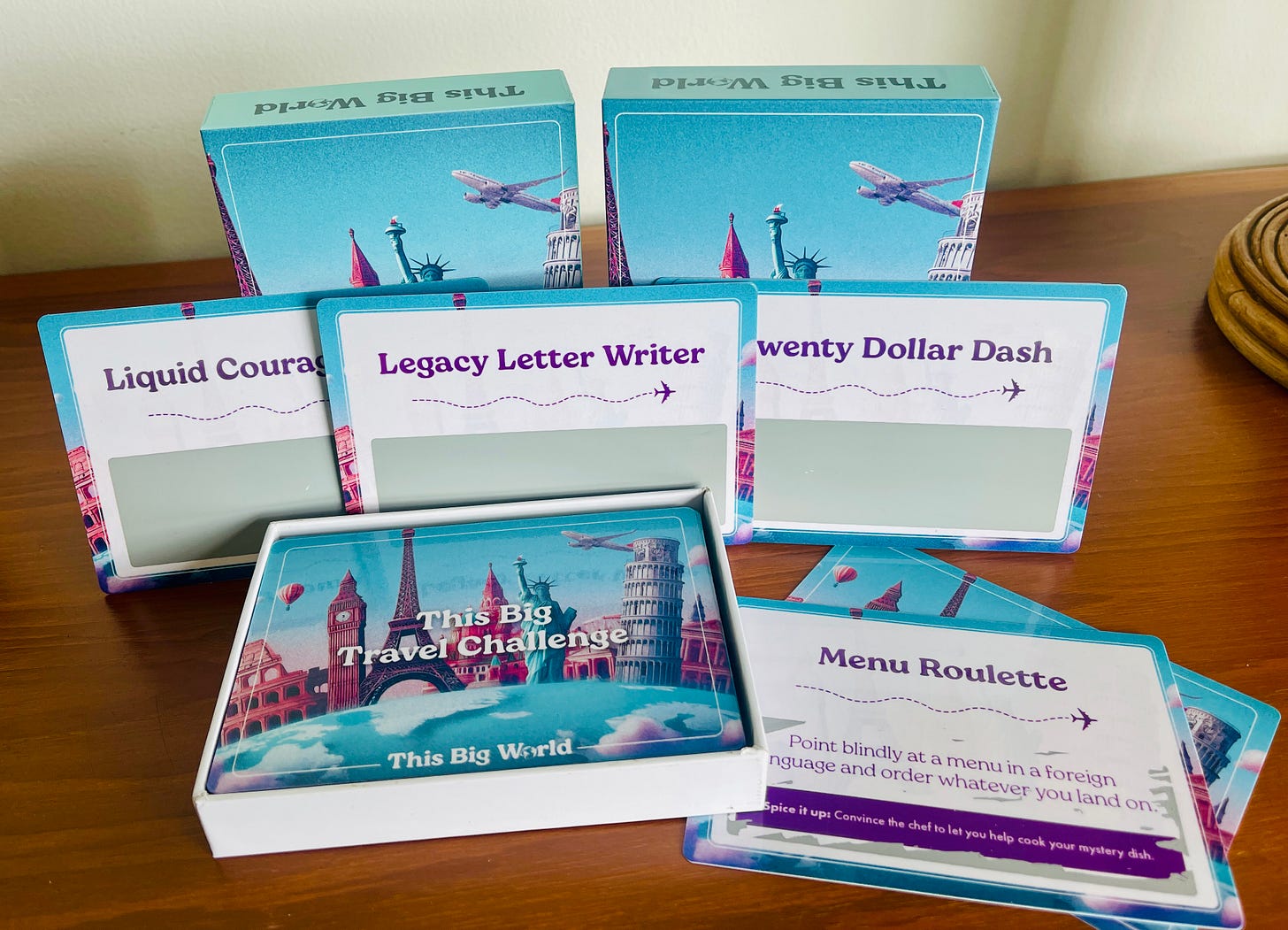Frustrated with Overthinking? 7 Tips to Think Less & Do More
Get it done, then get it right...
Do you ever feel like your brain’s running a marathon you didn’t sign up for?
You’re not alone. I used to jump into action without hesitation, (a bit like my first - and only - bungy jump); an exhilarating free fall into the next adventure.
Whether that was starting a new business or hopping on a one-way flight with a suitcase and a half-baked plan, I had no trouble leaping.
But a few years back I felt a shift in my mindset. All of a sudden, the same decisions that in my 20s I would have made mid-air, eyes closed, heart open; began to feel like a life-or-death situation.
The thrill of diving into the unknown went from seeing where the wind took me to a meticulous calculation of every possible outcome.
And it drives me mad! I’ve never felt so frustrated with myself.
So why the switch? Well, peri-menopause has undoubtedly been playing its part, but I also think it’s just the stage of life I’m in.
In my 20s, I had nothing to lose and everything to prove. These days, it feels like I carry more. More responsibilities, more people I love, more awareness of how fragile things can be.
I trust myself deeply, but I’m also more protective. Of my body, my time, my daughter… of the life I’ve worked hard to build.
But not one to stay in the crane when I could be flying through the air, I’ve embarked on a mission to reclaim my ‘ready, fire, aim’ approach, and here are some of the strategies I’ve been putting into play, which have been a huge help.
If you’re in a similar situation, hopefully they’ll be useful to you too!
1. Prioritise Tasks & Expand the Time Frame.
Too many choices can turn picking a breakfast cereal into a summit on world peace.
Like Greg McKeown said in ‘Essentialism’ – ‘you can do anything but you can’t do everything’.
Let me follow up with a second poignant quote by Bill Gates;
‘Most people overestimate what they can do in one year and underestimate what they can do in ten years.’
What if, instead of thinking we need to do everything all at once in the next few months; we adopt a longer term view and split our visions into yearly projects?
Start by asking where you want to be 10 years from now and work backwards from there.
Maybe you’re backpacking through Peru, living part-time in Thailand, or coaching female entrepreneurs online from an Airbnb in the mountains of Nepal.
By adopting a longer-term view, you can start to prioritise your tasks (and travels) across a broader timeline, which helps reduce the pressure (and the pile of things you think you need to do right now).
This simple act of long-term prioritisation will reduce overwhelm, which reduces anxiety, which reduces overthinking.
2. Use the ICE Framework to Prioritise
The ICE framework stands for Impact, Confidence, and Ease.
Impact – Is this a game changer?
Confidence – Will it work?
Ease – How easy is it to implement?
The goal is to rate your projects from 1 – 10 on each of these questions giving you a score between 0 – 30 for each project.
The higher the score, the bigger priority the project should be given.
For example;
Should I go bull shark diving off Kuata Island, Fiji? (currently in Fiji considering this option right now);
Impact – Is this a game changer? (could give me a significant amount of confidence in other areas, but won’t impact my life long-term so maybe a 3?)
Confidence – Will it work? (probably, but they are wild and unpredictable animals and the consequence should things go wrong is potentially fatal – hmmm – maybe a 1 at best)
Ease – How easy is it to implement? (I’m a certified diver and they’re all set up for it, doing 2 dives a day every day, so very easy - 10)
Result – 14 – Clearly not a priority! 😂
You get the idea.
Once you have a hierarchy for your projects, you can start to schedule them over the long term, transforming nebulous decisions into a clear-cut ranking system, allowing you to act with precision and, frankly, a bit more peace of mind.
Once you’ve become clearer on your priorities and tasks, it’s time to take action and reduce the time it takes to go from thought to action.
3. Make Fast Decisions
There’s something liberating about making quick decisions. It’s like ripping off a Band-Aid — swift and surprisingly less painful than you anticipate.
I recently began to adopt the ‘two-minute rule’: if a decision can be made in two minutes or less, I make it then and there.
This keeps the trivial choices from taking up mental space and leaves room for the big leagues.
If a decision can’t be made in 2 minutes it means it’s not a ‘hell yes’ and therefore either isn’t a priority or you’re just not ready to make that leap yet (and that’s ok). Instead write it in your brain dump book and revisit it at a later stage.
Side note: I still remember the day I was doing the bungy jump and as we were going up in the crane the instructor saying to me ‘I’ll count to 3 and you jump on 3.’ When we got to the top I knew if I hesitated even for a second I wouldn’t go, so I’m pretty sure I heard him say ‘Ok -1..’ and that was it I was out of there! That’s the essence of a fast decision 😂)
4. Embrace Good Enough
This was the trickiest one for me. (I’m still working on it) As a Virgo I’m a natural perfectionist. But perfectionism is a fickle beast. It can motivate us to achieve great things, but more often than not, it paralyses us.
Also perfectionism and paradise islands don’t mix. Especially when you’ve got minimal internet and need to work fast.
An old mentor of mine Jason Fladlien always talked about ‘setting hard deadlines’. In other words a non-negotiable timeline to get something done.
And when you hit the time, good enough was good enough!
‘Get it done, then get it right’, he would say.
So I’m learning to embrace ‘good enough’ by setting a timer, hitting publish, and walking away - without rereading, rewording, or tweaking every last sentence. (Which I can spend hours doing on Substack, FB posts, emails, you name it.)
Good enough therefore means hopefully it’s informative, engaging, and reflects my voice, but it doesn’t need to win a Pulitzer Prize.
If perfectionism’s been holding you back, try giving yourself a time or outcome limit and sticking to it. No endless tweaking or second-guessing. Just finish, release, and get on with your day. The freedom is magic (as are the results you’ll start seeing).
5. The Power of Positive Constraints (A.K.A. Boundaries That Buy You Freedom)
Sometimes, too much freedom can be a curse.
When you're building a laptop lifestyle, it's easy to romanticise doing things “when you feel like it.”
I’ve done that. And ended up working at 9pm on a Saturday night because the post I should’ve finished by Tuesday still wasn’t done.
But as much as I hate routine, freedom isn’t the avoidance of structure. It’s creating the right kind of structure so you can get the job done and still have room for a beach walk before sunset.
That’s what positive constraints are.
A clear start.
A clear end.
A non-negotiable block of time to focus.
Not rules. Just boundaries that make space for what matters most.
Because once it's done, it's done and that’s what gives you the real freedom. Not just to move forward in your work, but to close the laptop and go live your life.
Try this: pick one time in your day you can consistently protect, even just an hour.
For me, it’s usually 5–7am. No matter where I am in the world, I can usually carve out that pocket of focus (unless there’s a sunrise walk calling my name).
Make that your creative hour. Your decision-making hour. Your get-it-done time. Anchor it, protect it, and let everything else flow around it.
6. Reflection, not Rumination
It’s easy to ruminate on what went wrong, what we didn’t do, where we didn’t succeed, or wish we’d done more. But we need to harness the past to fuel the future.
Years ago when my knees were healthy, I had a tennis coach called Roger, who, every time I hit a bad shot and swore or went all John McEnroe, he would shout ‘let go of your baggage Jo and focus on the next shot!’
This was such a great lesson in tennis and in life.
Instead of overthinking past actions, we need to use them as a reflective tool.
What worked?
What didn’t?
What can we learn?
Then let go and move forward. This way, the past becomes a stepping stone, not a stumbling block.
7. Action Stations
Lastly, committing to daily acts of bravery is my antidote to overthinking.
By consciously choosing to be brave, whether in small steps or giant leaps, I’m rewiring my brain to act first and fine-tune later. (The jury is still out on bull shark diving!)
We need to reignite our instinct to trust our gut and leap into the new.
This takes time & dedication.
Set just one task every day that moves you out of your comfort zone. It doesn’t have to be huge.
Maybe you need to make a call you’ve been putting off, create a sales page for a product you’re nervous about selling, or reach out to a potential collaborator you admire but have been hesitant to contact.
But make it every day. Just one thing.
And always remember…
You’re Just as Good as Anybody Else.
I love this quote;
My Mum used to say that to me all the time growing up.
If you’re overthinking, the chances are you’re anxious. And if you’re anxious the chances are you’re fearful about something.
Judgement?
Rejection?
Crickets?
Whatever it is, you’re just as good as anyone else. Plus you have just as much right as anyone else to get out there and do what you want to do.
Less Thinking, More Leaping
By weaving these strategies into my daily routine, I’m slowly but surely finding my way back to the dynamic doer I know myself to be.
And if you’re wrestling with similar feelings, give these strategies a whirl.
Who knows? They might just be the bungy cord you need to jump back into the free fall of life. (Oh that was a cheesy loop – I’m leaving it in! 😂)
🎉 Win a $5,000 Dream Holiday as Part of my Brand New Ecom Launch! 🎉
I’m launching a new brand called This Big World, a collection of travel-inspired products designed to add more fun, curiosity, and adventure to life on the road.
The first release is The Travel Challenge Scratch-Off Deck. 50 playful prompts to help you see the world with fresh eyes, meet new people, and say “yes” to more spontaneous moments. (My sister and I have already had a blast testing a few through Italy!)
To celebrate the launch, I’m giving away a $5,000 Dream Holiday!
✨ Join the Early-Bird Insiders List ✨
As a member of my Substack community, you’re getting first access, before I open this to the public. Join the Insiders List now to be one of the first to grab your deck and secure your chance to win the $5,000 Dream Holiday.
Because life’s too short to travel small! 🌍








If a decision can’t be made in 2 minutes it’s not a Hell Yes’
Excellent point. Thanks
It's like you are speaking right to me here, Jo! I've been feeling that same sense of "too much at risk now" and "others in my life are now affected by my decisions" and it's been holding me back. Which I don't like. But, day by day I am working on getting my adventurous side back. I love the 1-second jump and I think you should dive with the sharks even if it's not a priority! Heh heh! Thank you for your brilliant words here! So helpful, as always!